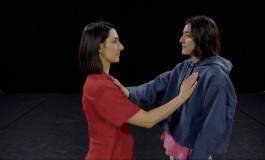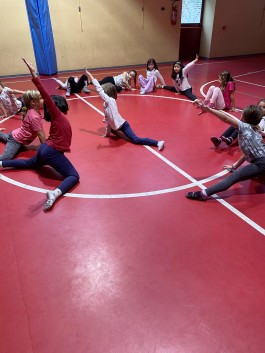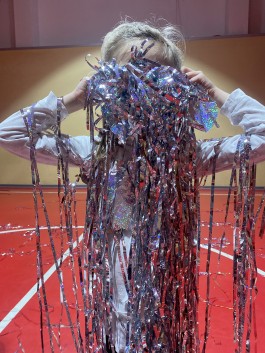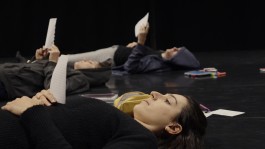Emotional Dance is a somatic and performative practice created by Marla Francis, exploring the body as a site of truth and relation.
It arises from the need to restore centrality to the emotional dimension in an era that tends to neutralize, contain, or spectacularize feeling.
Here, the body becomes a sensitive archive a territory crossed by emotions, tensions, and fragilities that are not repressed or represented, but listened to, traversed, and shared.
It is not about dancing or interpreting, but about allowing the body to feel. Each session unfolds as a process of physical and emotional disarmament, where movement originates from a real impulse rather than from an aesthetic intention. Breath, voice, stillness, proximity, and encounter become tools of opening and revelation.

Emotional Dance is also a politics of feeling.
In a time that demands productivity, speed, and performance, it offers a space for slowness, listening, and care.
Vulnerability, far from being a weakness, becomes a radical act a way of being in the world that refuses armor and embraces permeability.
This condition of active vulnerability opens a possibility for genuine relation, where the other is not a spectator but part of a shared emotional field.



It is an invitation to restore depth to presence, to reinhabit tenderness, to recognize the body as a field of poetic resistance.
Through minimal gesture, suspension, and shared emotion, the practice opens an intermediate zone between performance, pedagogy, and care where what is usually hidden or silenced can finally emerge.


Emotional Dance is a somatic and performative practice created by Marla Francis, exploring the body as a site of truth and relation.
It arises from the need to restore centrality to the emotional dimension in an era that tends to neutralize, contain, or spectacularize feeling.
Here, the body becomes a sensitive archive a territory crossed by emotions, tensions, and fragilities that are not repressed or represented, but listened to, traversed, and shared.
It is not about dancing or interpreting, but about allowing the body to feel. Each session unfolds as a process of physical and emotional disarmament, where movement originates from a real impulse rather than from an aesthetic intention. Breath, voice, stillness, proximity, and encounter become tools of opening and revelation.

Emotional Dance is also a politics of feeling.
In a time that demands productivity, speed, and performance, it offers a space for slowness, listening, and care.
Vulnerability, far from being a weakness, becomes a radical act a way of being in the world that refuses armor and embraces permeability.
This condition of active vulnerability opens a possibility for genuine relation, where the other is not a spectator but part of a shared emotional field.



It is an invitation to restore depth to presence, to reinhabit tenderness, to recognize the body as a field of poetic resistance.
Through minimal gesture, suspension, and shared emotion, the practice opens an intermediate zone between performance, pedagogy, and care where what is usually hidden or silenced can finally emerge.

